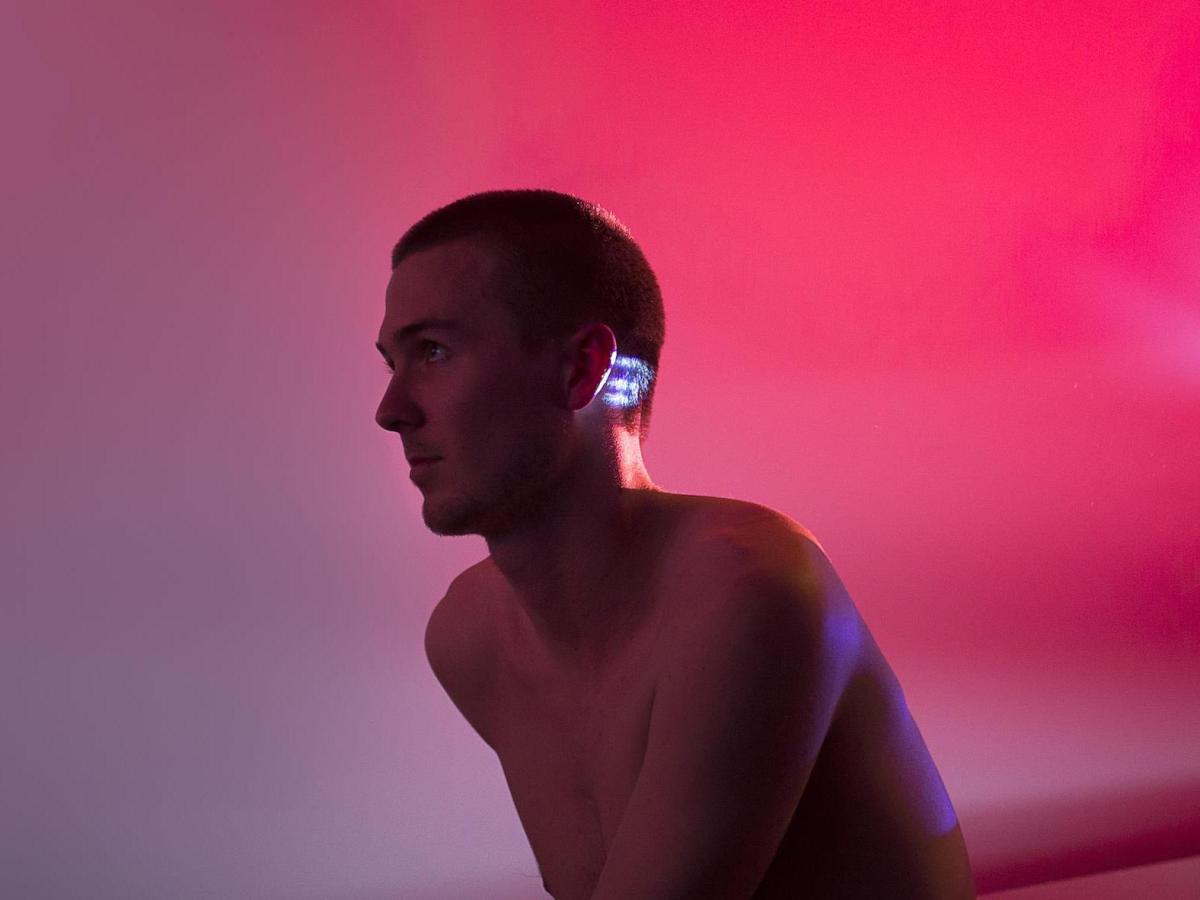Tim Coad, Peephole, Panopticon, Dark Mofo, 2017. Photo credit: Jessie Barclay.
As part of the University of Tasmania’s ongoing relationship with renowned Tasmanian art and music festivals, students are regularly invited to participate in an array of innovative and high profile cultural projects.
In 2018, UTAS students from the School of Creative Arts (which now includes Media) created over 20 installations for Dark Mofo, the popular winter festival curated by Hobart’s Museum of Old and New Art. Situated in the ground floor windows of the Centre for the Arts in Hobart, a high-profile location attracting thousands of visitors on their way to and from the festival’s Dark Park each night, the installations were a striking and memorable response to the Dark Mofo theme of ‘Time’.
UTAS 3D Design students have been given the opportunity to pitch and create work for Dark Mofo’s 2018 Winter Feast, creating bespoke seating for the popular dockside banqueting hall, while this year Art students created an installation for the entrance to The Falls Festival, a three-day music event at Marion Bay.
Students are also invited to participate in other events through the year including AgFest, which obviously has a more agricultural bent and is favoured by UTAS media students.
There are opportunities available for students from across a range of creative areas, including art, music, theatre and media, through to architecture and design.
Projects cover multiple disciplines, such as SOMA, a collaborative project as part of Mona Foma 2019. Architecture and design students incorporated sound engineering skills and equipment with architecture and design principles, to construct a portable recording and performance studio inside a shipping container.
Similarly, Theatre and Performance students worked with the Mona Foma team to create a durational late night performance for the Festival Club. They performed over two nights in a crowded and popular venue.
‘Cross-disciplinary projects like this are real-world experiences. Students actually get to work on these really cool and unique projects, and they get a genuine experience of working in the creative industries,’ said Head of Theatre and Performance, Dr Jane Woollard.
The opportunity to participate in such acclaimed events are a huge boost to students, especially considering their creations can be seen and experienced by thousands of people. Such exposure can also be beneficial at the conclusion of their studies.
‘There is something that you learn from a real-world brief that you just can’t get from a classroom or a textbook,’ Dr Woollard said.
‘It also has that really unique advantage of making professional connections. Many of these placements can lead to, if not an immediate job out of graduation, maybe a job further down the road. And at the very least, these placements can provide a mentor to touch base with in your future career, too.’
Students from all over Tasmania, as well as the mainland, are drawn to study at UTAS, which has campuses in Hobart, Launceston and Burnie. The opportunity to be part of the state’s dynamic festival sector is a huge incentive.
‘We have some industry-leading festivals, including The Unconformity in Queenstown, and the list is growing. These festivals and events are uniquely Tasmanian, and within the Australian arts sector are regarded as cutting edge’, said Dr Woollard.
‘Events such as the Junction Arts Festival, Mona Foma, Dark Mofo, Ten Days on the Island and The Unconformity help build tourism in Tasmania and pride in Tasmania, as well as creating jobs and a sustainable economy. The value of being part of the School of Creative Arts and Media is that we are teaching interdisciplinary practice, with an eye on the bigger picture for Tasmania and future employment for our graduates.’
Dr Jan Hogan, Head of Art, said UTAS prides itself on world-class workshops for the students presented by visiting professionals across a huge range of subjects, as well as by the University’s award-winning staff, all of whom are experts in their own field.
Neil Hadden, a lecturer in painting at the School of Arts, recently won the $100,000 Hadley’s Art Prize for Australian landscape painting. Another faculty member, Associate Professor Andrew Legg, is the Curator of Music and Performance and also a composer for major Hollywood film and orchestra projects. Head of Theatre and Performance, Dr Jane Woollard, has written several plays, including The Hammer of Devotion, Needle Eye, Prophet and Loss and Miss W Treads and directed over 50 productions.
‘We have some incredible talent employed within the university,’ Dr Hogan said. ‘The beauty of studying creative arts at UTAS is that the students do get one-on-one time with those incredible talents and they do get to work across those multiple disciplines.
‘Those really unique connections are right here and are changing how our students learn.’
For more information about courses offered at The University of Tasmania, please visit www.utas.edu.au





